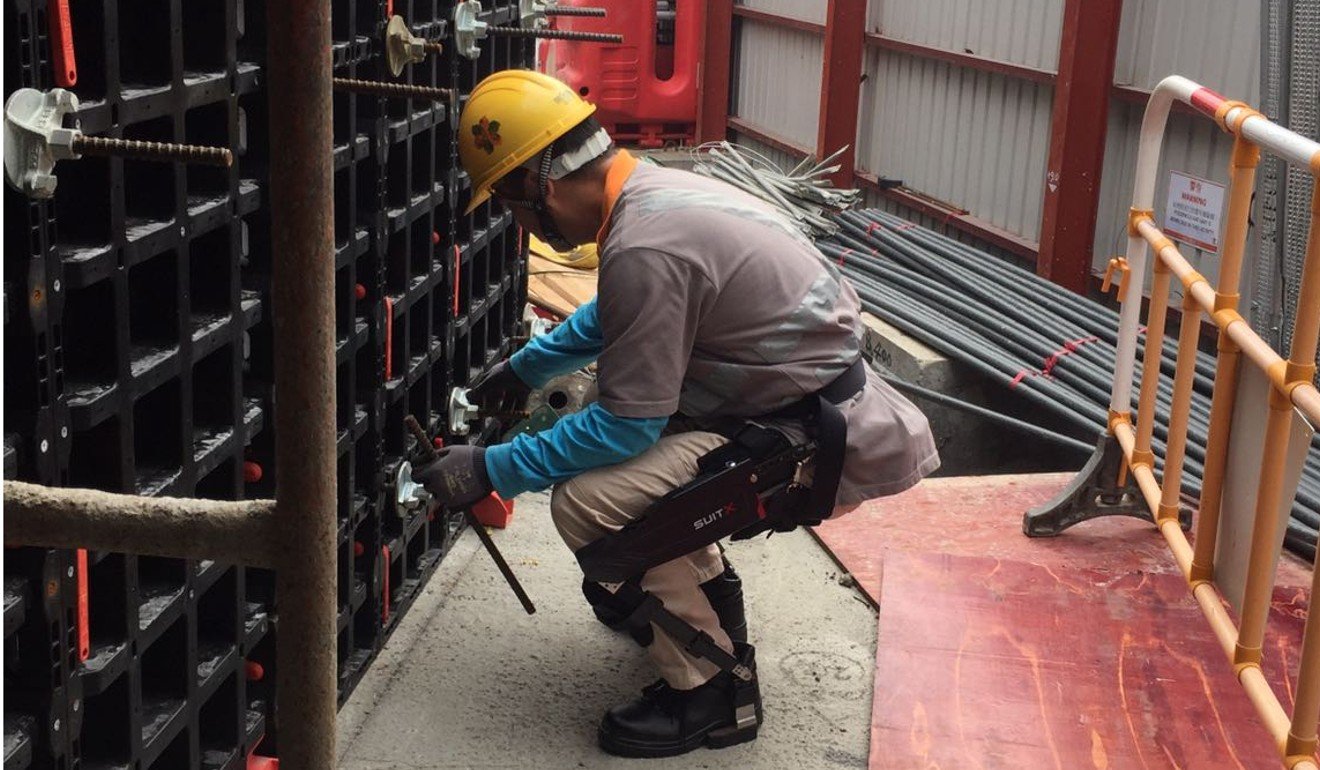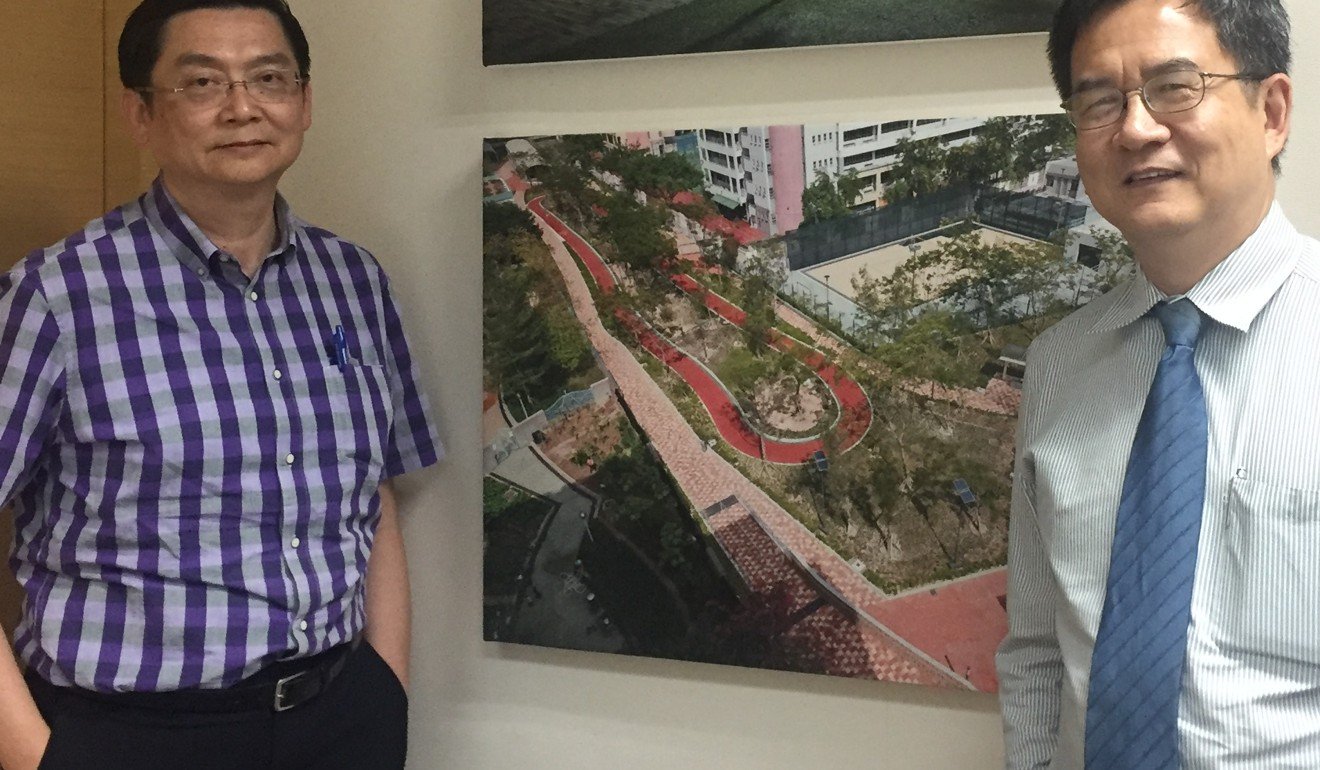
Bridging the gap: Hong Kong construction firms make the most of technology
Gammon Construction and Chun Wo Development Holdings are going hi-tech in their quest to build better and safer buildings
Hong Kong’s big construction companies are embracing new technology and other innovations in a bid to build better and safer residential buildings that match projects in New York and London.
Construction companies, such as Gammon Construction and Chun Wo Development Holdings, say they have introduced robotic machines, drone surveying, use of building information modelling (BIM) and 3D printing in on-site and off-site works.
Last year, Gammon imported wearable robots from Japan called exoskeletons with built-in motors, designed to help workers lift heavy objects. When a worker bends down to lift an object, the exoskeleton reduces back strain by helping to raise the upper body.

3D printing is widely used in the construction industry here to validate design for manufacturing and assembly, verifying the feasibility of the design, enhancing the effectiveness of construction and eliminating uncertainties, says Billy Wong Chi-pan, a senior BIM/AEC technology manager at Gammon.
“The technology could also be used to customise tools and on-site installations, such as fixtures, taking advantages of its installation quality, consistency and efficiency,” Wong says.
“While the technology has existed for some time … the construction industry has been slow to adopt it, I believe it will make the most of the technology. For the time being, 3D-printed objects lack structural strength, thus 3D printing materials should be developed to address this drawback.”
To meet demand from the construction industry industrial tech firms are developing industrial-scale metal printing technology to produce large structural parts made of metal and concrete.
Last month, GE Additive, the digital industrial part of US industrial giant GE, revealed plans for a new metal 3D printer, which it said would be a powder bed fusion machine with a build size that can be measured in metres.
XJet, an Israeli 3D printing firm partially owned by Catalyst CEL Fund, a venture between Catalyst Private Equity in Israel and China Everbright, says it has developed “the world’s first direct 3D metal jetting system” driven by NanoParticle Jetting technology.
While 3D printing helps prove the feasibility of design, and could produce specific building components in the near future, BIM co-ordinates complex designs in the virtual world to maximise the level of details.
In order to promote the use of BIM across the building and construction sector, the Construction Industry Council (CIC) has introduced guidelines, known as the CIC BIM Standards, to enable a client, for example a developer, to specify, manage and assess BIM deliverables by architects, engineers, surveyors and contractors.
The council believes the use of the CIC BIM Standards will ensure that project deliverables produced using the BIM processes, including planning, implementation, management and checking, achieve an agreed level of quality.
More large-scale project owners, such as the West Kowloon Cultural District Authority, Airport Authority or MTR Corp, have included BIM use as part of their contractual requirements, says Stephen Lee, CEO of Chun Wo.

“It will take some time for BIM to be fully implemented across the industry,” Lee says. “Smaller players may need more resources and help from industry bodies in hardware and software costs and staff training.”
He says advances in mobile technology, BIM and 3D visualisation, will enable construction managers to read plans, organise tasks and track progress.
More construction companies are using high-definition digital survey equipment for residential and commercial construction sites. Chun Wo has started using drones to survey sites, monitor work in progress and inventory, and to ensure the project is built according to plans and specifications.
Using prefabricated parts made off-site, modular construction has been around for some time, and is useful in civil engineering projects, such as bridges. Mechanised prefabrication construction systems improve building quality and minimise damage to the environment during construction.
Chun Wo recently purchased some robotic suits from the United States to help some of their construction workers lift and manoeuvre heavy objects. “All these investments in hardware, software and staff training are worth it,” Lee says.
Additional reporting by Mukul Munish
